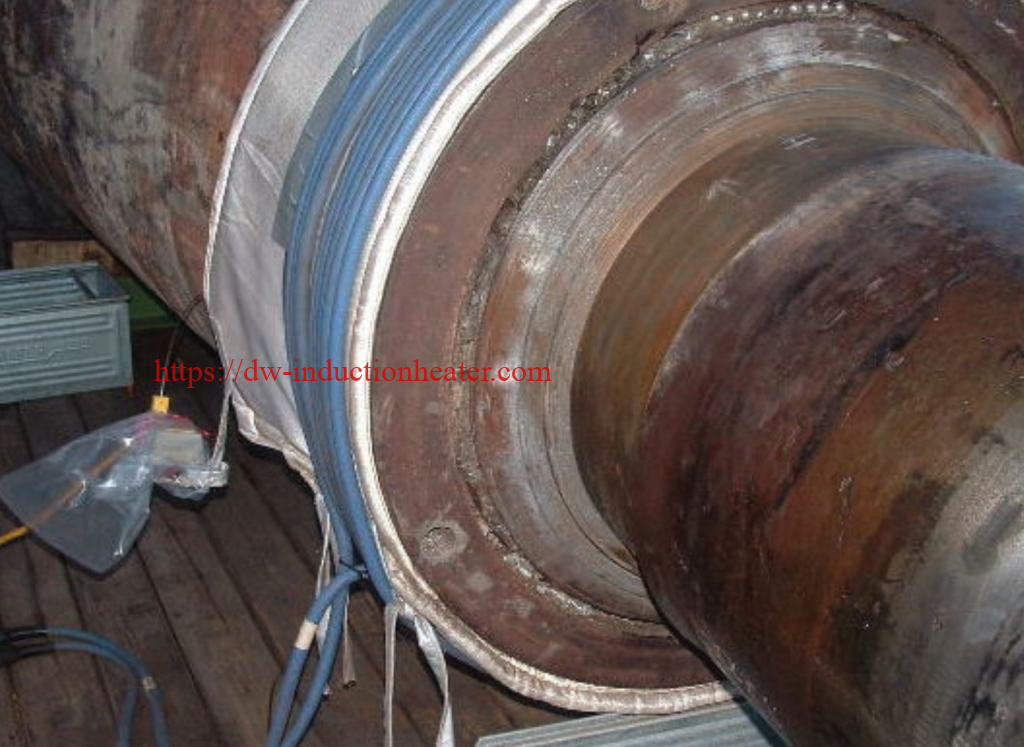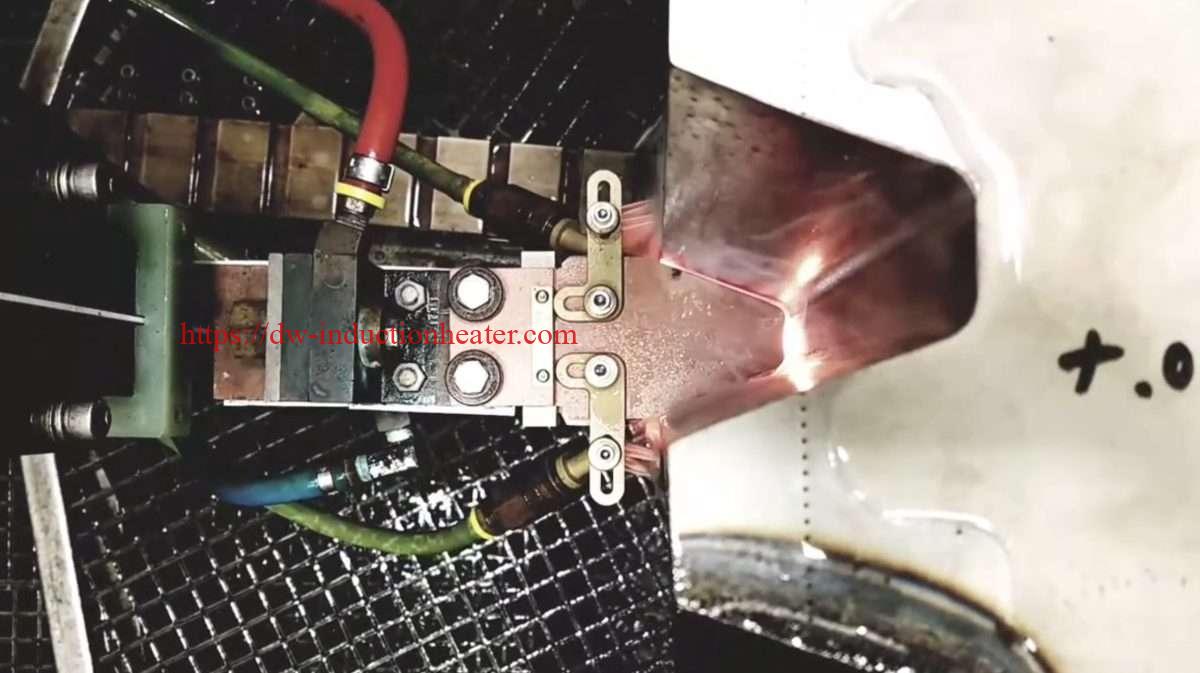
Achieving High-Quality Tooth-by-Tooth Hardening of Large Gears with Induction Heating

In the manufacturing industry, large gears play a critical role in various applications such as heavy machinery, wind turbines, and industrial equipment. To ensure their durability and performance, it is essential to apply a hardening process to the gear teeth. One of the most effective methods for achieving tooth-by-tooth hardening in large gears is through induction heating.
 Induction heating
Induction heating is a process that utilizes electromagnetic induction to heat the surface of the gear teeth rapidly. By applying a high-frequency alternating current to a coil, a magnetic field is generated, which induces eddy currents in the gear tooth surface. These eddy currents create localized heating, allowing for precise and controlled hardening of each individual tooth.
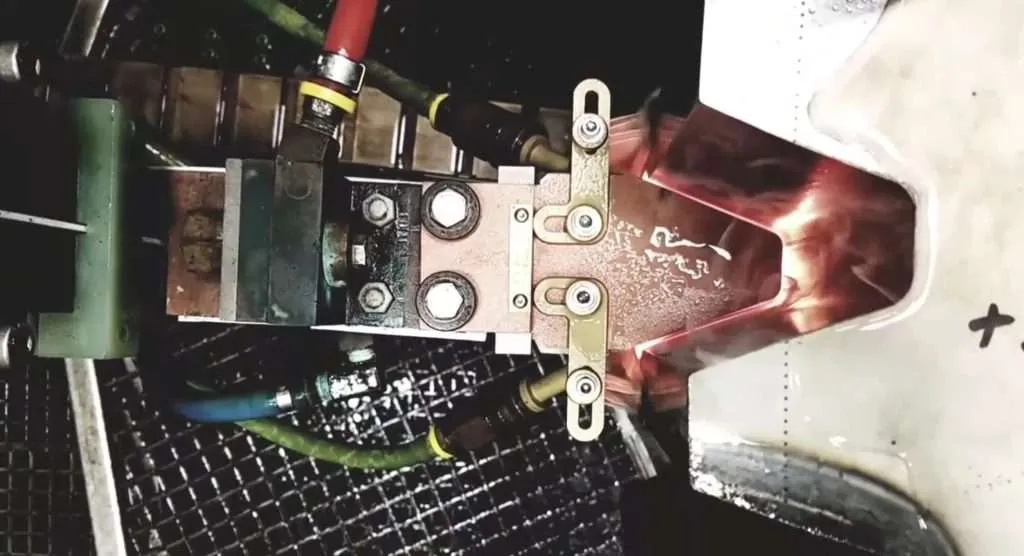
Tooth-by-tooth hardening using induction heating offers several advantages over other hardening methods. Firstly, it ensures uniform hardness distribution across the gear teeth, resulting in improved wear resistance and load-carrying capacity. This is particularly crucial for large gears that are subjected to heavy loads and harsh operating conditions.
Secondly, induction heating enables selective hardening, meaning only the gear teeth are heated, while the rest of the gear remains relatively unaffected. This minimizes the risk of distortion or warping, which can occur with other heat treatment methods that involve heating the entire gear. The precise control over the heating process allows for targeted hardening, resulting in a high-quality, dimensionally stable gear.
 Induction hardening
Induction hardening of small-, medium, and large-size gears is done using a tooth-by-tooth technique or encircling method. Depending on the gear size, required hardness pattern and geometry, gears are induction hardened by encircling the whole gear with a coil (so-called “spin hardening of gears”), or for larger gears, heating them “tooth-by-tooth”, where a more precise hardening result can be achieved, although the process is much slower.
Tooth-by-Tooth Hardening of large gears
The tooth-by-tooth method can be done in two alternative techniques:
“tip-by-tip” applies a single-shot heating mode or scanning mode, an inductor encircles a body of a single tooth. This method is rarely used because it does not provide the required fatigue and impact strength.
A more popular “gap-by-gap” hardening technique applies only a scanning mode. It requires the inductor to be symmetrically located between two flanks of adjacent teeth. Inductor scanning rates are typically within 6mm/sec to 9mm/sec.

There are two scanning techniques used:
- the inductor is stationary and the gear is moveable
- the gear is stationary and the inductor is moveable (more popular when hardening large-size gears)
The induction hardening Inductor
 Inductor geometry depends upon the shape of the teeth and the required hardness pattern. Inductors can be designed to heat only the root and/or flank of the tooth, leaving the tip and tooth core soft, tough, and ductile.
Inductor geometry depends upon the shape of the teeth and the required hardness pattern. Inductors can be designed to heat only the root and/or flank of the tooth, leaving the tip and tooth core soft, tough, and ductile.
Simulation helps prevent overheating
When developing tooth-by-tooth gear hardening processes, particular attention should be paid to electromagnetic end/edge effects and the ability to provide the required pattern in the gear end areas.
Upon scanning a gear tooth, the temperature is distributed within gear roots and flanks quite uniformly. At the same time, since the eddy current makes a return path through the flank and, particularly through the tooth tip, proper care should be taken to prevent overheating the tooth tip regions, in particular at the beginning and at the end of the scan hardening. A simulation can help to prevent these unwanted effects before developing the process.
Simulation example
Scanning tooth by tooth gear hardening case at 12 kHz.
Spray cooling is also simulated but not visible in the result images. A cooling effect is applied to the top and side faces of the two teeth, as well as moving the cooling zone following the inductor.
3D Hardened profile in grey color:
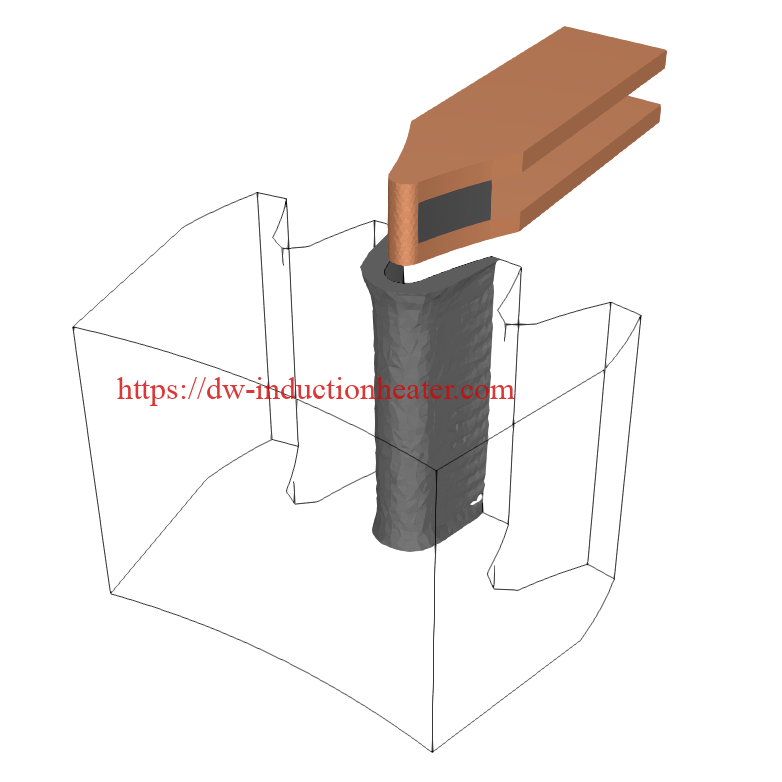
2D Hardened profile vertical slice: CENOS allows you to easily visualize how the hardened profile becomes deeper if the power is not decreased or switched off near the end of the gear. 
Current density on gear:

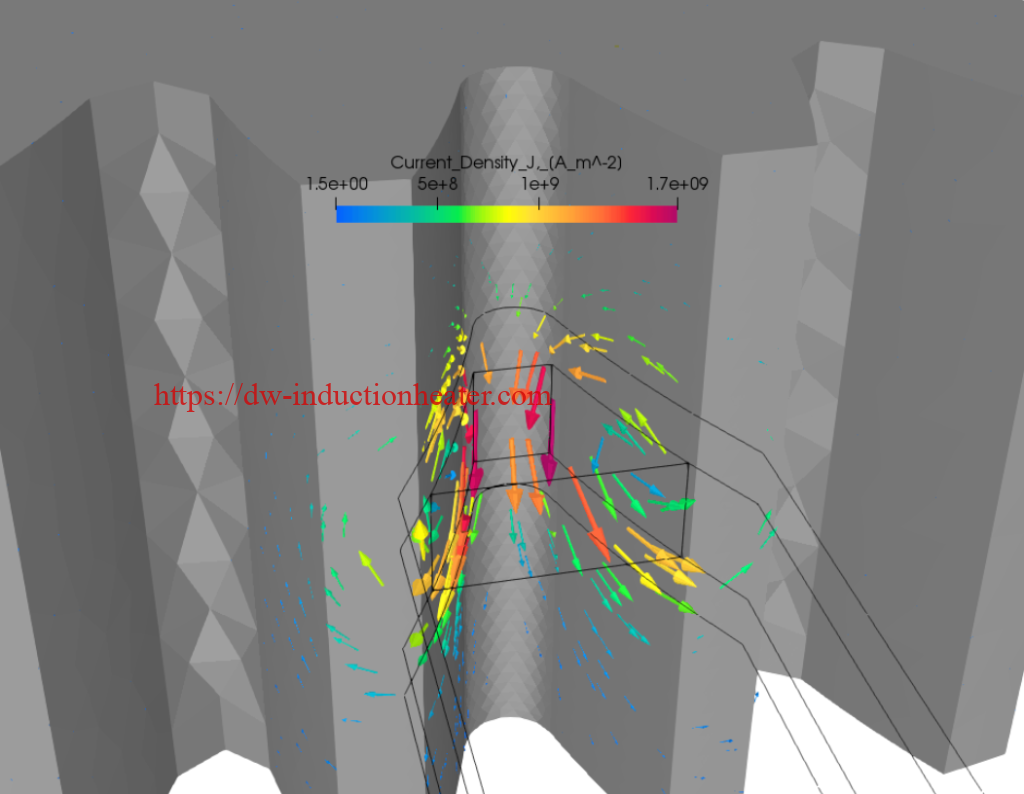
Additionally, induction heating offers rapid heating and cooling rates, reducing the overall processing time compared to conventional methods. This is particularly advantageous for large gears, as it helps to improve production efficiency and reduce costs.

To achieve tooth-by-tooth hardening of large gears using induction heating, specialized equipment is required. The induction heating system typically consists of a power supply, a coil or inductor, and a cooling system. The gear is positioned in the coil, and the power supply is activated to generate the required heat. The process parameters, such as power, frequency, and heating time, are carefully controlled to achieve the desired hardness profile.
In conclusion, tooth-by-tooth hardening of large gears using induction heating is a highly effective and efficient method. It ensures uniform hardness distribution, selective hardening, and rapid processing times, resulting in high-quality, durable gears. If you are involved in the manufacturing of large gears, considering the implementation of induction heating for tooth-by-tooth hardening can significantly enhance the performance and longevity of your products.
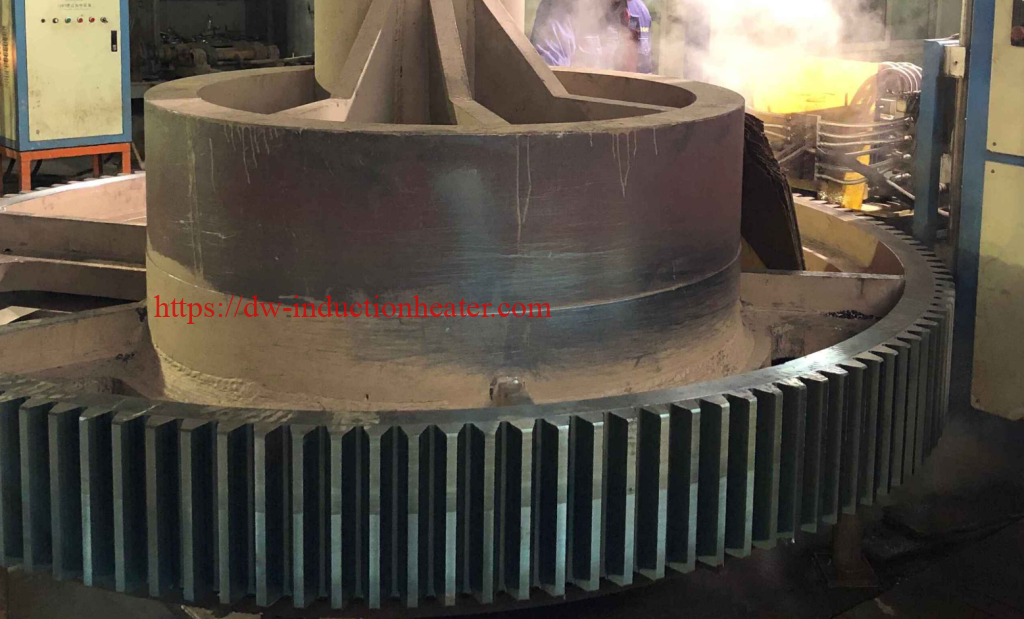 https://dw-inductionheater.com/tooth-by-tooth-induction-scanning-hardening-teeth-of-large-gear.html?feed_id=231094&_unique_id=65669bca7d2f4
https://dw-inductionheater.com/tooth-by-tooth-induction-scanning-hardening-teeth-of-large-gear.html?feed_id=231094&_unique_id=65669bca7d2f4
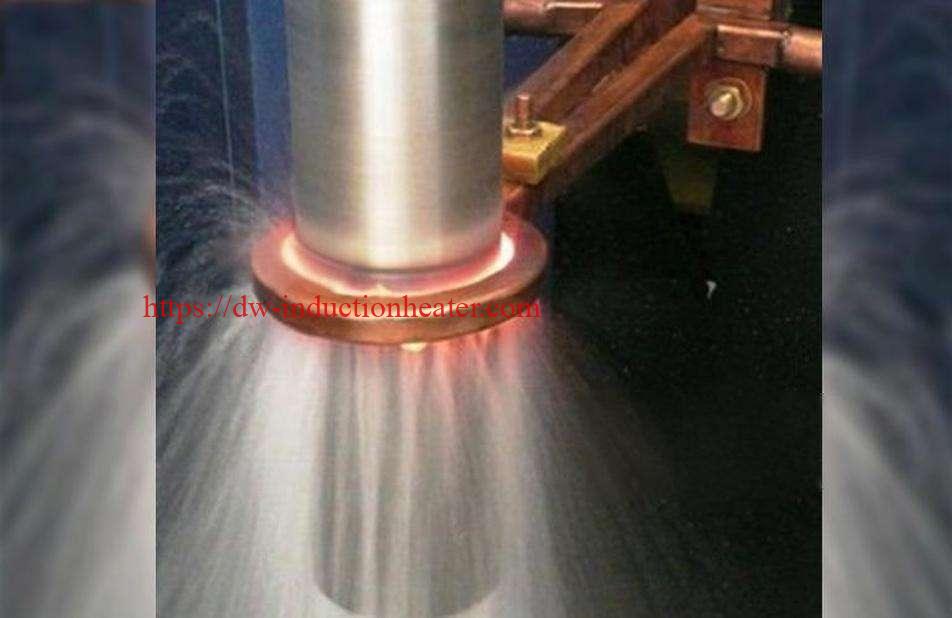 Induction quenching is a surface hardening process that involves heating a metal component using induction heating and then rapidly cooling it to achieve a hardened surface. This process is widely used in various industries, including automotive, aerospace, and manufacturing, to improve the wear resistance and durability of metal components. In this article, we will explore the applications of induction quenching surface treatment and its benefits in different industries.
Induction quenching is a surface hardening process that involves heating a metal component using induction heating and then rapidly cooling it to achieve a hardened surface. This process is widely used in various industries, including automotive, aerospace, and manufacturing, to improve the wear resistance and durability of metal components. In this article, we will explore the applications of induction quenching surface treatment and its benefits in different industries. Automotive Industry:
The automotive industry is one of the largest users of induction quenching for surface hardening applications. Components such as gears, shafts, and camshafts are often subjected to induction quenching to improve their wear resistance and fatigue strength. Induction quenching allows for precise control over the hardening depth and pattern, making it an ideal choice for automotive components that require high precision and consistency.
Aerospace Industry:
In the aerospace industry, induction quenching is used to improve the performance and longevity of critical components such as landing gear parts, turbine blades, and engine components. These parts are often subjected to extreme conditions during operation, and induction quenching helps to increase their resistance to wear, corrosion, and fatigue. The ability to selectively harden specific areas of a component makes induction quenching an attractive option for aerospace applications where weight reduction and performance optimization are critical.
Automotive Industry:
The automotive industry is one of the largest users of induction quenching for surface hardening applications. Components such as gears, shafts, and camshafts are often subjected to induction quenching to improve their wear resistance and fatigue strength. Induction quenching allows for precise control over the hardening depth and pattern, making it an ideal choice for automotive components that require high precision and consistency.
Aerospace Industry:
In the aerospace industry, induction quenching is used to improve the performance and longevity of critical components such as landing gear parts, turbine blades, and engine components. These parts are often subjected to extreme conditions during operation, and induction quenching helps to increase their resistance to wear, corrosion, and fatigue. The ability to selectively harden specific areas of a component makes induction quenching an attractive option for aerospace applications where weight reduction and performance optimization are critical. Manufacturing Industry:
In the manufacturing industry, induction quenching is used for a wide range of applications, including tooling, dies, molds, and machine components. These components are often subjected to high levels of wear and abrasion during operation, making them ideal candidates for induction quenching. By increasing the hardness and wear resistance of these components' surfaces through induction quenching, manufacturers can extend their service life and reduce downtime due to premature failure.
Manufacturing Industry:
In the manufacturing industry, induction quenching is used for a wide range of applications, including tooling, dies, molds, and machine components. These components are often subjected to high levels of wear and abrasion during operation, making them ideal candidates for induction quenching. By increasing the hardness and wear resistance of these components' surfaces through induction quenching, manufacturers can extend their service life and reduce downtime due to premature failure.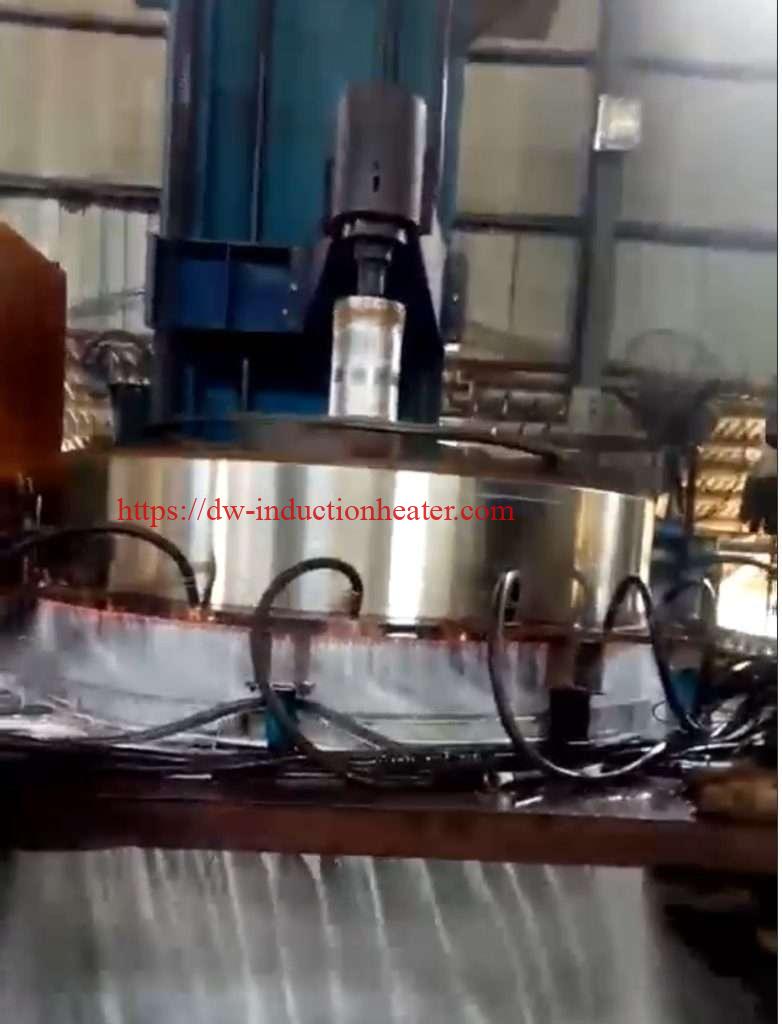 Benefits of Induction Quenching Surface Treatment:
1. Improved Wear Resistance: Induction quenching significantly increases the hardness of a metal component's surface layer, making it more resistant to wear from frictional forces.
2. Enhanced Fatigue Strength: Components that undergo induction quenching exhibit improved fatigue strength due to the transformation of their microstructure into a hardened state.
3. Precise Control: Induction quenching allows for precise control over the depth and pattern of hardening on a component's surface, enabling tailored solutions for specific applications.
4. Reduced Distortion: Compared to traditional heat treatment methods such as flame or furnace heating, induction quenching minimizes distortion in metal components due to its localized heating approach.
5. Energy Efficiency: Induction heating is an energy-efficient process that minimizes heat loss compared to other heating methods like flame or furnace heating.
Benefits of Induction Quenching Surface Treatment:
1. Improved Wear Resistance: Induction quenching significantly increases the hardness of a metal component's surface layer, making it more resistant to wear from frictional forces.
2. Enhanced Fatigue Strength: Components that undergo induction quenching exhibit improved fatigue strength due to the transformation of their microstructure into a hardened state.
3. Precise Control: Induction quenching allows for precise control over the depth and pattern of hardening on a component's surface, enabling tailored solutions for specific applications.
4. Reduced Distortion: Compared to traditional heat treatment methods such as flame or furnace heating, induction quenching minimizes distortion in metal components due to its localized heating approach.
5. Energy Efficiency: Induction heating is an energy-efficient process that minimizes heat loss compared to other heating methods like flame or furnace heating. 6. Environmentally Friendly: Induction quenching produces minimal emissions or waste products compared to other heat treatment methods that involve combustion processes.
7. Cost-Effective: The precision control offered by induction quenching reduces material waste by minimizing over-treatment or rework requirements.
Conclusion:
Induction quenching surface treatment offers numerous benefits across various industries by improving the wear resistance and durability of metal components while maintaining tight tolerances on critical dimensions. Its ability to selectively harden specific areas makes it an attractive option for applications where precision control is essential. As technology continues to advance in this field with improvements in equipment design and process optimization techniques, we can expect further advancements in induction quenching's capabilities across different industries in the future.
6. Environmentally Friendly: Induction quenching produces minimal emissions or waste products compared to other heat treatment methods that involve combustion processes.
7. Cost-Effective: The precision control offered by induction quenching reduces material waste by minimizing over-treatment or rework requirements.
Conclusion:
Induction quenching surface treatment offers numerous benefits across various industries by improving the wear resistance and durability of metal components while maintaining tight tolerances on critical dimensions. Its ability to selectively harden specific areas makes it an attractive option for applications where precision control is essential. As technology continues to advance in this field with improvements in equipment design and process optimization techniques, we can expect further advancements in induction quenching's capabilities across different industries in the future. https://dw-inductionheater.com/induction-quenching-surface-applications.html?feed_id=231259&_unique_id=6580f9d493705
https://dw-inductionheater.com/induction-quenching-surface-applications.html?feed_id=231259&_unique_id=6580f9d493705





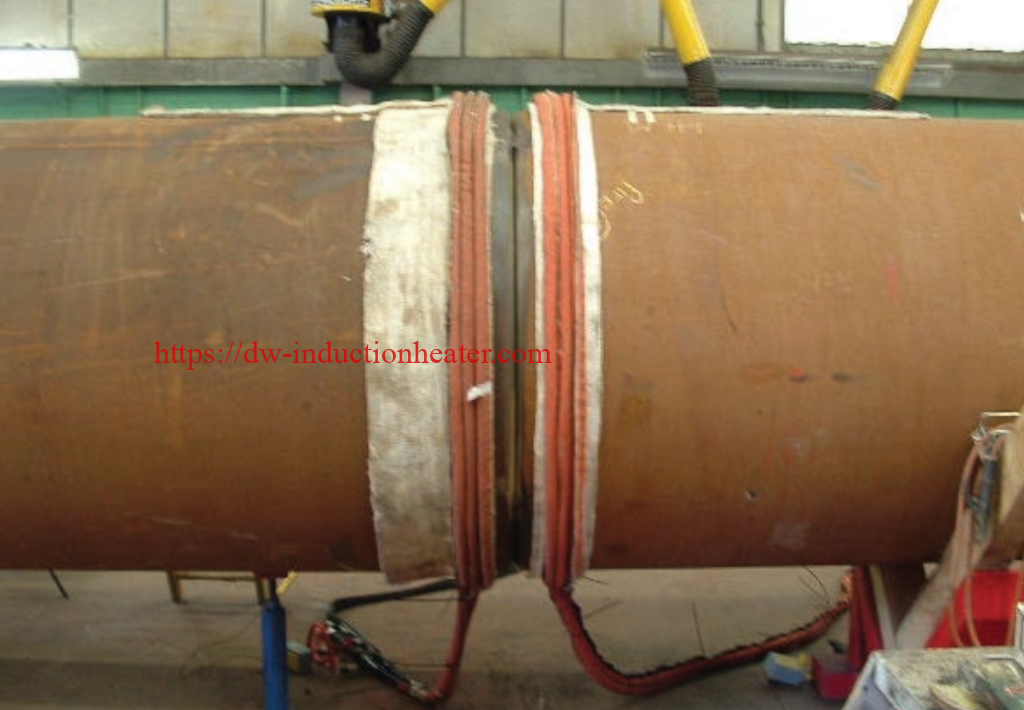 In today's fast-paced and demanding work environment, stress is a common occurrence for many individuals. Whether it's due to work-related pressures, personal issues, or a combination of both, stress can have a significant impact on an individual's overall well-being and productivity. As a result, finding effective ways to manage and alleviate stress has become increasingly important.
One method that has gained popularity in recent years is induction stress relieving. This technique uses electromagnetic induction to heat metal components to a specific temperature and then slowly cool them down, resulting in the reduction of internal stresses within the material. In this comprehensive guide, we will explore the principles behind induction stress relieving, its applications in various industries, and the benefits it offers for individuals and organizations.
Principles of Induction Stress Relieving
In today's fast-paced and demanding work environment, stress is a common occurrence for many individuals. Whether it's due to work-related pressures, personal issues, or a combination of both, stress can have a significant impact on an individual's overall well-being and productivity. As a result, finding effective ways to manage and alleviate stress has become increasingly important.
One method that has gained popularity in recent years is induction stress relieving. This technique uses electromagnetic induction to heat metal components to a specific temperature and then slowly cool them down, resulting in the reduction of internal stresses within the material. In this comprehensive guide, we will explore the principles behind induction stress relieving, its applications in various industries, and the benefits it offers for individuals and organizations.
Principles of Induction Stress Relieving
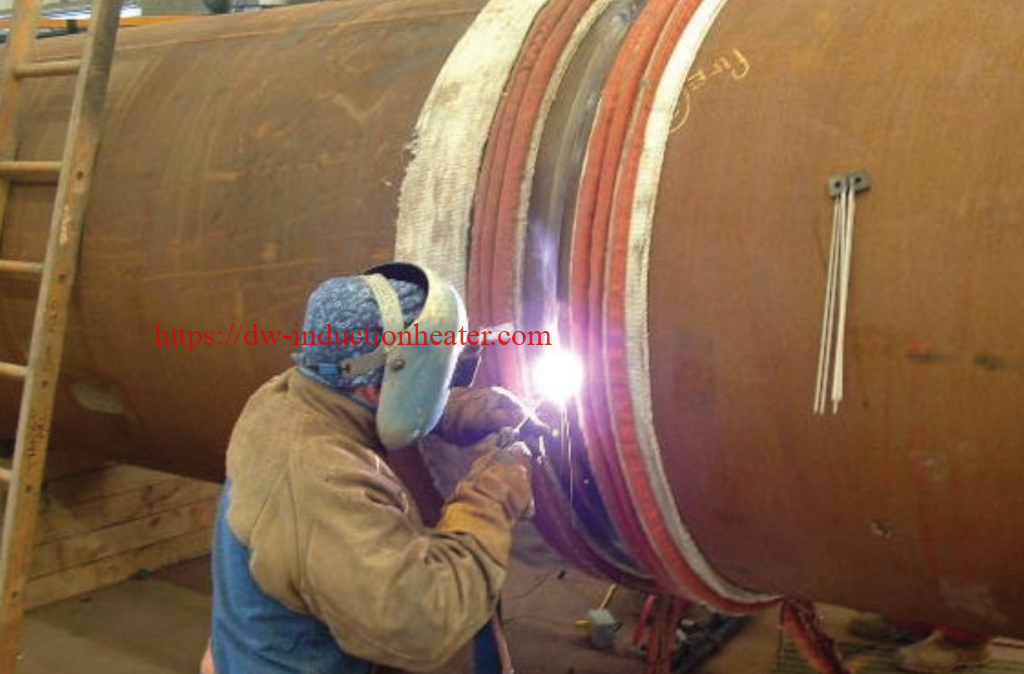 - Machined parts: Metal parts that undergo machining processes such as milling or turning can develop residual stresses that affect their dimensional stability and performance. Induction stress relieving can help mitigate these issues and improve the quality of machined parts.
- Castings: Casting processes can result in uneven cooling rates within metal castings, leading to internal stresses that affect their mechanical properties. Induction stress relieving can help homogenize these stresses and improve the overall quality of castings.
- Heat-treated components: Heat treatment processes such as quenching or tempering can introduce residual stresses within metal components. Induction stress relieving can be used as a post-treatment step to reduce these residual stresses and improve the overall stability of heat-treated components.
Benefits of Induction Stress Relieving
The use of induction stress relieving offers several key benefits for individuals and organizations:
- Improved mechanical properties: By reducing internal stresses within metal components, induction stress relieving can improve their mechanical properties such as strength, ductility, and fatigue resistance.
- Enhanced dimensional stability: Internal stresses within metal components can lead to dimensional instability over time. Induction stress relieving helps mitigate these issues by promoting dimensional stability and reducing distortion.
- Increased product reliability: Components that undergo induction stress relieving are less prone to premature failure due to reduced internal stresses, resulting in increased product reliability and longevity.
- Improved performance: Induction stress relieving can help improve the performance of components by reducing internal stresses, which can lead to better dimensional stability and overall performance.
- Cost savings: By reducing the likelihood of premature failure and the need for frequent repairs or replacements, induction stress relieving can result in cost savings for manufacturers and end users.
- Enhanced safety: Components that undergo induction stress relieving are less likely to fail unexpectedly, which can enhance overall safety in various applications.
- Better quality control: Induction stress relieving can help manufacturers maintain better quality control by ensuring that components are free from excessive internal stresses that could compromise their performance or reliability.
Mastering Induction Stress Relieving for Improved Product Performance
Induction stress relieving is a crucial process in the manufacturing industry that can significantly improve the performance of products. By subjecting metal components to controlled heating and cooling cycles, induction stress relieving helps to reduce internal stresses and improve the overall stability and durability of the product.
To master induction stress relieving for improved product performance, it is essential to understand the principles behind the process and how it can benefit different types of materials and components. Here are some key steps to consider:
1. Understand the Material Properties: Different materials have unique properties that influence how they respond to stress relieving processes. It's important to have a thorough understanding of the material being used and how it will react to induction heating.
2. Determine Optimal Parameters: The success of induction stress relieving depends on using the right combination of temperature, time, and cooling rates. It's crucial to determine the optimal parameters for each specific application to achieve the desired results.
3. Use Advanced Induction Heating Equipment: Investing in high-quality induction heating equipment is essential for achieving precise control over the stress relieving process. Advanced technology allows for accurate temperature monitoring and uniform heating, resulting in consistent and reliable outcomes.
4. Implement Quality Control Measures: To ensure that induction stress relieving is effectively reducing internal stresses, it's important to implement quality control measures such as non-destructive testing and inspection techniques.
5. Continuously Improve Processes: Mastering induction stress relieving requires a commitment to continuous improvement. By analyzing data, gathering feedback, and making adjustments as needed, manufacturers can refine their processes for optimal results.
By mastering induction stress relieving techniques, manufacturers can enhance product performance by reducing distortion, improving dimensional stability, and increasing resistance to fatigue and corrosion. This ultimately leads to higher-quality products with improved reliability and longevity in service.
In conclusion, mastering
- Machined parts: Metal parts that undergo machining processes such as milling or turning can develop residual stresses that affect their dimensional stability and performance. Induction stress relieving can help mitigate these issues and improve the quality of machined parts.
- Castings: Casting processes can result in uneven cooling rates within metal castings, leading to internal stresses that affect their mechanical properties. Induction stress relieving can help homogenize these stresses and improve the overall quality of castings.
- Heat-treated components: Heat treatment processes such as quenching or tempering can introduce residual stresses within metal components. Induction stress relieving can be used as a post-treatment step to reduce these residual stresses and improve the overall stability of heat-treated components.
Benefits of Induction Stress Relieving
The use of induction stress relieving offers several key benefits for individuals and organizations:
- Improved mechanical properties: By reducing internal stresses within metal components, induction stress relieving can improve their mechanical properties such as strength, ductility, and fatigue resistance.
- Enhanced dimensional stability: Internal stresses within metal components can lead to dimensional instability over time. Induction stress relieving helps mitigate these issues by promoting dimensional stability and reducing distortion.
- Increased product reliability: Components that undergo induction stress relieving are less prone to premature failure due to reduced internal stresses, resulting in increased product reliability and longevity.
- Improved performance: Induction stress relieving can help improve the performance of components by reducing internal stresses, which can lead to better dimensional stability and overall performance.
- Cost savings: By reducing the likelihood of premature failure and the need for frequent repairs or replacements, induction stress relieving can result in cost savings for manufacturers and end users.
- Enhanced safety: Components that undergo induction stress relieving are less likely to fail unexpectedly, which can enhance overall safety in various applications.
- Better quality control: Induction stress relieving can help manufacturers maintain better quality control by ensuring that components are free from excessive internal stresses that could compromise their performance or reliability.
Mastering Induction Stress Relieving for Improved Product Performance
Induction stress relieving is a crucial process in the manufacturing industry that can significantly improve the performance of products. By subjecting metal components to controlled heating and cooling cycles, induction stress relieving helps to reduce internal stresses and improve the overall stability and durability of the product.
To master induction stress relieving for improved product performance, it is essential to understand the principles behind the process and how it can benefit different types of materials and components. Here are some key steps to consider:
1. Understand the Material Properties: Different materials have unique properties that influence how they respond to stress relieving processes. It's important to have a thorough understanding of the material being used and how it will react to induction heating.
2. Determine Optimal Parameters: The success of induction stress relieving depends on using the right combination of temperature, time, and cooling rates. It's crucial to determine the optimal parameters for each specific application to achieve the desired results.
3. Use Advanced Induction Heating Equipment: Investing in high-quality induction heating equipment is essential for achieving precise control over the stress relieving process. Advanced technology allows for accurate temperature monitoring and uniform heating, resulting in consistent and reliable outcomes.
4. Implement Quality Control Measures: To ensure that induction stress relieving is effectively reducing internal stresses, it's important to implement quality control measures such as non-destructive testing and inspection techniques.
5. Continuously Improve Processes: Mastering induction stress relieving requires a commitment to continuous improvement. By analyzing data, gathering feedback, and making adjustments as needed, manufacturers can refine their processes for optimal results.
By mastering induction stress relieving techniques, manufacturers can enhance product performance by reducing distortion, improving dimensional stability, and increasing resistance to fatigue and corrosion. This ultimately leads to higher-quality products with improved reliability and longevity in service.
In conclusion, mastering 